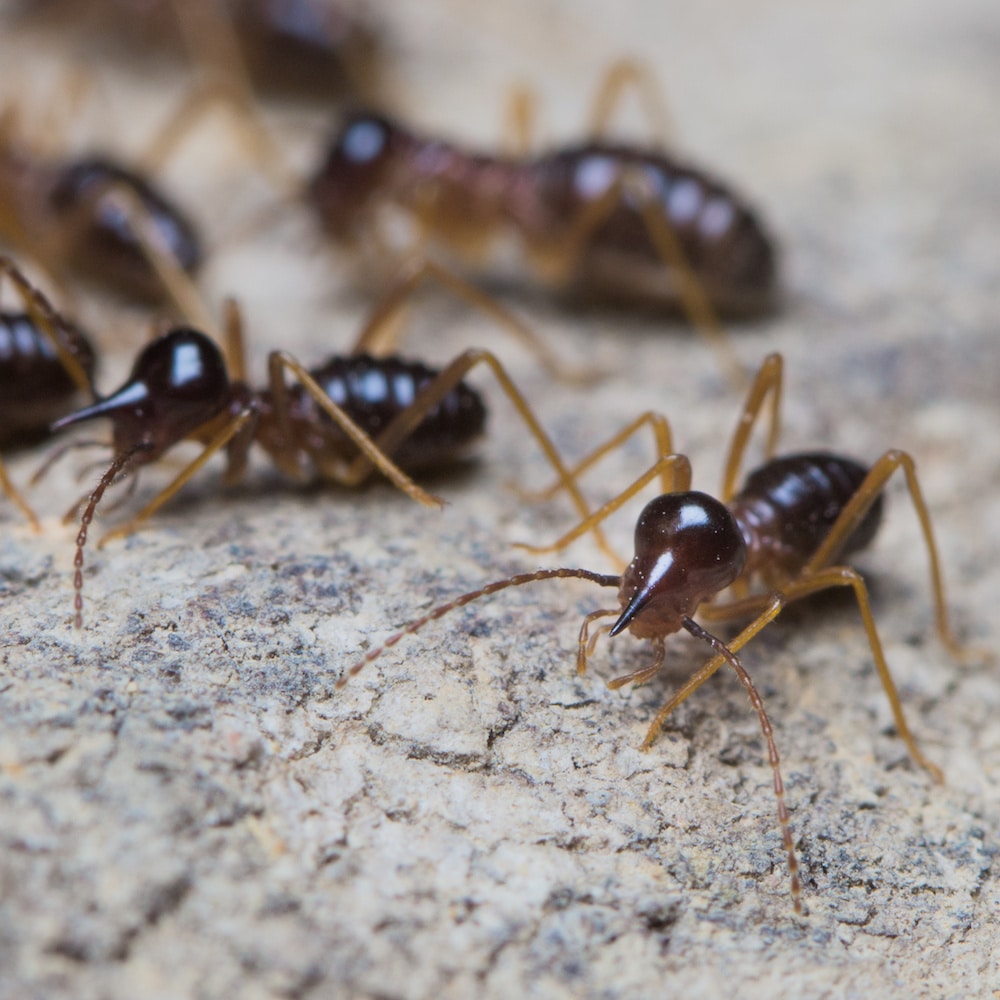Termites
Just one experience with a termite infestation is all it takes to leave an impression. Once you’ve seen the damage they can do, your heart might beat a little quicker the next time you spot a twitching antennae on your property. Fortunately, unless the damage goes undetected for a long time, a house that has been infested with termites can be saved. We’re here to offer you some tips on how to keep them away. The first line of defense is simply knowing what to look out for.

Are Termites Ants?
Ants are easy to mistake from afar, but make no mistake, termites are a far bigger nuisance. It may not be the most pleasant sight, seeing a line of ants marching across your countertop, or reckoning with a winged beastie on your window pane, but it’s likely to be a surface concern. With Termites, once the problem has reached the surface, likely there is deep damage down below. There are a few visible differences between the two, and once you know where to look, it’s easy to spot one from the other.
Swarming termites and flying ants are four-winged insects. The difference between the wings of an ant and the wings on a termite are in symmetry, not quantity. Termites will have two sets of equal length wings sprouting from a uniform body. Ants have pinched waists, and their wings are not of equal length. The rear wings on a flying ant will be slightly smaller than the fore wings. It’s a little more subtle, but if you get up close you can see the ants will have elbowed antennae, while the termite’s stick straight out.
What Type of Termites Should I Worry About?
There are many species of termites, the 3 main types are dampwood termites, drywood termites and subterranean termites. Dampwood termites are the least likely to cause damage to your home. As the name suggests, they prefer a moisture-rich environment. Assuming the structural timbers of your home are not perpetually soaked (which would be a different concern all together) drywood and subterranean terranean termites are the types to keep your eye on.
Drywood termites will cause damage to homes. They can be found in dead trees and wood piles on your property, living inside the wood as they eat it. One sign of a drywood termite infestation is a sawdust-like waste product called “frass” piled up near little holes in the wood. Fortunately, drywood termite colonies are small and they work slowly.
Subterranean termites prefer the soil. You may have seen little mud tubes branching from trees and fence posts. That would be a sign of these guys. Their little bodies dry out quickly in the open air, so when they move from their home in the dirt to a cellulose rich food source they leave their tunnels behind as evidence. Subterranean termites have massive colonies, do massive damage, and their terrain is widespread.
What Can I Do To Protect My House?
Eliminating fallen trees and dead tree stumps on your property, as well as removing scrap wood is recommended to avoid attracting the attention of a colony. Most homeowners are encouraged to have termite inspections done yearly to avoid being taken unaware.
It is uncommon for a house to be completely destroyed by termites, this takes years of work for an aggressive termite colony. However, it doesn’t take long for the damage to become quite costly to repair. As with anything, the smartest cure is prevention.
Professional termite inspections should be done if there is even a whiff of suspicion. Remember: once you begin to see evidence on the surface, there could already be a big problem underneath.
Prices may vary. Please call our office for more information. We will be happy to answer your questions or schedule a free estimate.
What if there is a problem inside?
No problem! Just call our office & a technician will be dispatched to inspect & take care of the pest problem. As long as you continue with out quarterly program, these visits will be FREE!
